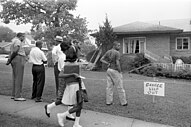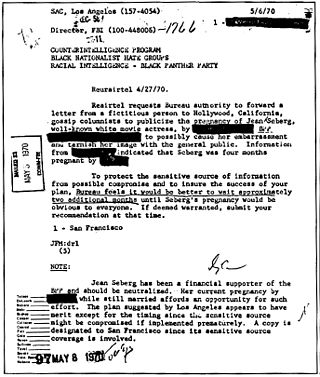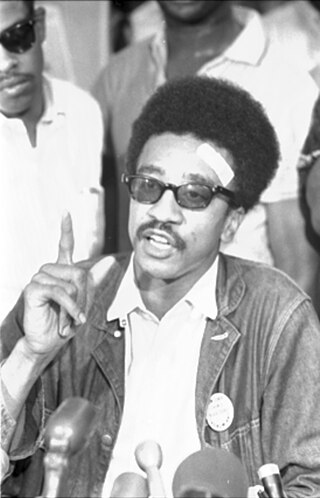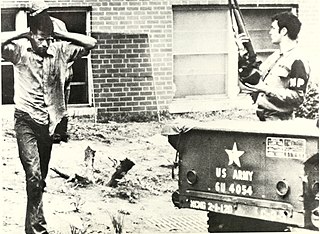An editor has nominated this article for deletion. You are welcome to participate in the deletion discussion , which will decide whether or not to retain it. |
This article needs additional citations for verification .(August 2023) |
| This article is part of a series on the |
| History of the United States |
|---|
 |
The United States faced multiple waves of political violence during the Cold War. The first would occur as a result of the reemergence of the Ku Klux Klan in 1950, in opposition to the growing civil rights movement, which sought an end to racial segregation and other forms of institutional racism. The new Klan also gained a new anti-communist and neo-fascist element, in response to the rise of anti-communist ideas in American society as a result of the Red Scare. Other white supremacist organizations would arise at the same time, such as the American Nazi Party. In Puerto Rico, the Puerto Rican Nationalist Party would launch a series of revolts throughout the 50s, including an attempted assassination of Harry S. Truman. In the early 60s, standoffs between federal and state governments would result in events such as the Little Rock Crisis and the Ole Miss riot of 1962.
Contents
Political violence in the United States would increase throughout the 60s and 70s, which included the rise of many left-wing militant groups such as Weather Underground, the Black Panther Party, the Symbionese Liberation Army, and the May 19th Communist Organization. Some of which (chiefly the WUO and M19), would launch a series of bombings against various targets, mainly those associated with the federal government. Clashes between demonstrators and the police would be a major aspect of the protests against the US' involvement in the Vietnam War, culminating in the Kent State shootings and the Jackson State killings, both perpetrated by the National Guard. Events dubbed the "Ghetto riots" would occur throughout the 60s as a backlash against racial discrimination in impoverished mostly-African American neighborhoods.
Racist backlash against the civil rights movement and the Black power movement would continue in the form of the 16th Street Baptist Church bombing by four members of the KKK and the later Greensboro massacre in 1979. 1968 is often highlighted as a particularly chaotic year in American history, [5] which included an escalation of the Vietnam War, the widely televised 1968 Democratic National Convention protests, and the assassinations of both Robert F. Kennedy and Martin Luther King Jr.
The federal government would commit acts of illegal surveillance against movements considered subversive as part of its COINTELPRO operation from 1956 to 1971, which allegedly backed militant anti-communist organizations, such as Secret Army Organization. Clashes between police and organizations associated with the Black Power movement would culminate in the 1985 MOVE bombing, committed by the Philadelphia Police Department, resulting in the deaths of 11 and the partial destruction of the neighborhood of Cobbs Creek. Attacks committed by left-wing organizations would largely end the same year, with the dissolution of M19. The rise of white supremacist and Neo-Nazi prison gangs throughout the 70s and 80s would result in multiple murders motivated by antisemitism including the murder of the Goldmark family and of Alan Berg.
Leftist political violence mostly died down by the end of the 20th-century. Some far-right organizations founded in the late 20th century would continue to operate.
This period is often known for the number of assassinations that occurred, including those of Medgar Evers, John F. Kennedy, Malcolm X, George Lincoln Rockwell, Martin Luther King Jr., Robert F. Kennedy, Fred Hampton, Huey P. Newton, and Alan Berg.














